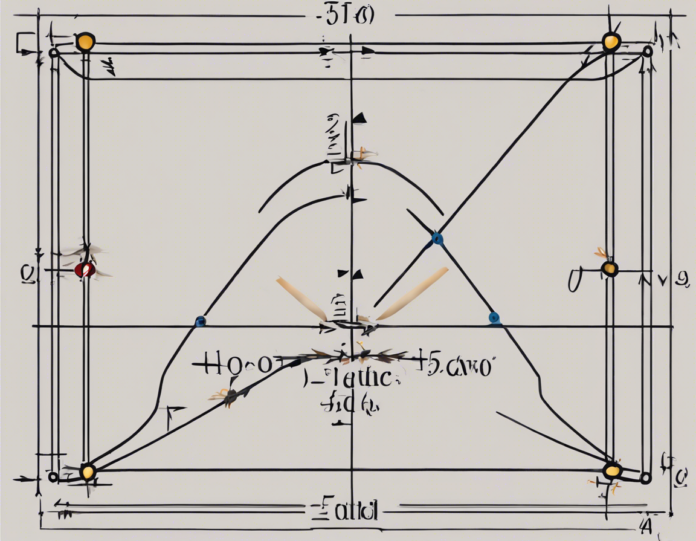Electric fields are fundamental concepts in physics that play a crucial role in understanding the behavior of charged particles. In this article, we will delve into the intricacies of calculating the electric field produced by a point charge. This calculation is essential for various applications in physics and engineering, from understanding the behavior of charged particles in electromagnetic fields to designing electrical circuits.
Understanding Electric Field
Before we dive into the calculations, let’s grasp the concept of an electric field. An electric field is a region of space surrounding a charged object within which another charged object experiences a force. This force is exerted on the test charge due to the presence of the source charge creating the electric field.
The electric field at a point in space is a vector quantity denoted by E. Its direction indicates the direction of the force that a positive test charge would experience at that point. The magnitude of the electric field at a given point is the force per unit positive charge experienced by a small test charge placed at that point.
Mathematically, the electric field due to a point charge can be calculated using Coulomb’s Law. Coulomb’s Law describes the force between two point charges and is given by:
[ F = k \times \frac{q_{1} \times q_{2}}{r^2} ]
Where:
- F is the force between the two charges,
- k is Coulomb’s constant ((8.99 \times 10^9 \, N m^2/C^2)),
- (q_{1}) and (q_{2}) are the magnitudes of the two charges,
- r is the distance between the charges.
Calculating Electric Field for a Point Charge
For a point charge, we consider a scenario where we have a charge ( q ) located at the origin of our coordinate system. To find the electric field at a point P located at a distance r from the charge, we can use the formula for the electric field due to a point charge:
[ E = \frac{k \times q}{r^2} ]
Where:
- E is the electric field at point P,
- k is Coulomb’s constant,
- q is the magnitude of the point charge,
- r is the distance between the point charge and point P.
The direction of the electric field at point P is radially outward from the point charge if the source charge is positive and radially inward if the source charge is negative.
Steps to Calculate Electric Field for a Point Charge
- Identify the Parameters:
- Determine the magnitude of the point charge ( q ).
- Measure the distance r between the point charge and the point where you want to calculate the electric field.
-
Note the value of Coulomb’s constant ( k = 8.99 \times 10^9 \, N m^2/C^2 ).
-
Calculate the Electric Field Magnitude:
-
Substitute the values of ( q ), r, and ( k ) into the formula ( E = \frac{k \times q}{r^2} ) to find the magnitude of E.
-
Determine the Direction of the Electric Field:
-
As mentioned earlier, if the point charge is positive, the electric field points away from it. If the point charge is negative, the electric field points towards it.
-
Expressing the Electric Field as a Vector Quantity:
- Since the electric field is a vector quantity, it has both magnitude and direction. Thus, the electric field at point P due to a point charge at the origin can be expressed as (\vec{E} = E \cdot \hat{r}), where (\hat{r}) is the unit vector in the radial direction.
Example Calculation
Let’s work through an example to calculate the electric field at a point located at a distance of 2 meters from a point charge of magnitude ( +3 \mu C ).
Given:
– Charge, ( q = +3 \mu C ) (microcoulombs)
– Distance, r = 2 meters
– Coulomb’s constant, ( k = 8.99 \times 10^9 \, N m^2/C^2 )
Substitute these values into the electric field formula:
[ E = \frac{(8.99 \times 10^9 \, N m^2/C^2) \times (3 \times 10^{-6} C)}{(2)^2} ]
Calculating:
[ E = \frac{(8.99 \times 10^9 \times 3 \times 10^{-6})}{4} ]
[ E = \frac{26.97 \times 10^{3}}{4} ]
[ E = 6.7425 \times 10^{3} \, N/C ]
Therefore, the electric field at a point 2 meters away from a ( +3 \mu C ) point charge is ( 6.7425 \times 10^{3} \, N/C ) radially outward.
Why Calculating Electric Fields for Point Charges Is Important
Understanding and calculating electric fields due to point charges are crucial for several reasons:
-
Force Prediction: Electric fields help in predicting the force experienced by a test charge placed in the vicinity of a point charge.
-
Circuit Analysis: In electrical engineering, knowledge of electric fields is vital for analyzing circuits and understanding how charges move in response to electric fields.
-
Charged Particle Motion: Electric fields play a significant role in determining the motion of charged particles in accelerators, mass spectrometers, and other devices.
-
Field Mapping: Calculating electric fields allows for the mapping of field lines that represent the direction and strength of the force on a charge at any given point in space.
-
Electrostatic Potential: The electric field is related to the gradient of the electrostatic potential. Calculating electric fields aids in understanding potential differences and energy changes in electric systems.
FAQ on Calculating Electric Field for a Point Charge
1. Can the electric field be negative?
Yes, the electric field can be negative if the source charge creating the field is negative. This indicates that the force on a positive test charge would be in the opposite direction to the field.
2. What is the unit of electric field?
The unit of the electric field is newtons per coulomb (N/C) in the SI system of units.
3. How does the electric field due to a point charge vary with distance?
The electric field due to a point charge decreases with the square of the distance from the charge. This is in accordance with the inverse square law.
4. Can the electric field at a point be zero?
Yes, the electric field at a point can be zero if the net electric force experienced by a test charge placed at that point is zero. This could happen at specific distances and orientations from the source charge.
5. How is the direction of the electric field determined?
The direction of the electric field at a point is determined by considering whether a positive test charge placed at that point would be attracted or repelled by the source charge creating the field.
6. Can there be multiple point charges affecting the electric field at a point?
Yes, the total electric field at a point due to multiple point charges is the vector sum of the electric fields due to each individual charge.
7. What happens to the electric field inside a conductor?
In electrostatic equilibrium, the electric field inside a conductor is zero. This is because the free charges in the conductor redistribute themselves in such a way that cancels out any external electric field within the conductor.
8. How does the presence of a dielectric material affect the electric field around a point charge?
The introduction of a dielectric material alters the electric field. The electric field within the dielectric material is reduced compared to the field in a vacuum, as the presence of the dielectric affects the polarization of charges.
9. How does the electric field behave near an infinite plane of charge?
Near an infinite plane of charge, the electric field is uniform and perpendicular to the plane, regardless of the distance from the plane.
10. Can the electric field lines ever intersect?
No, electric field lines cannot intersect in a given region of space. If they were to intersect, there would be multiple directions for the electric field at that point, which is not physically allowed.
In conclusion, understanding how to calculate the electric field for a point charge is essential for various applications in physics and engineering. Mastering the concept of electric fields allows us to predict and analyze the interactions between charged particles and comprehend the behavior of electric systems. Through the formulas and examples provided in this article, you can now confidently compute the electric field for point charges and enhance your comprehension of electromagnetism.









